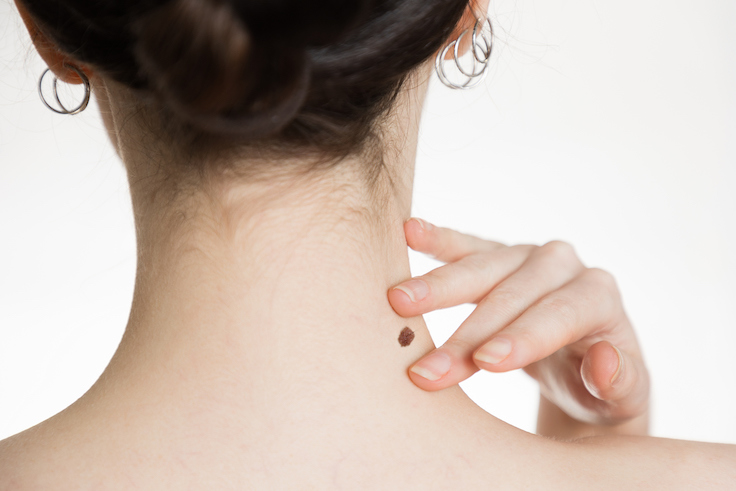Moles

Moles, also called nevi, are common skin growths that may or may not be a health risk.
They are typically brown, but can also red, pink, black, tan, skin-colored or colorless. Moles are generally round and may be flat or slightly raised. Moles should not change in size or shape over time.
While most moles do not require medical attention, a dermatologist can remove a mole that the patient finds unattractive, that causes discomfort (i.e. rubs against clothing) or which looks suspicious. Suspicious moles could indicate cancer.
Suspicious moles have one or more of the following traits:
- Asymmetry -- Moles should be symmetrical in shape. If one half of the mole is different from the other half, it signals a red flag.
- Border -- Irregular, scalloped or poorly defined borders. It should be easy to tell where the mole ends and regular skin begins.
- Color -- Color gradients or multiple colors within the mole indicate a potential malignancy.
- Diameter -- A mole that is larger than the size of a pencil eraser may be cause for concern.
- Evolving -- Moles that change over time in size, shape or color are a warning sign.
If you have any concerns about a mole, schedule an appointment with one of our board-certified dermatologists immediately.
Causes
Moles are developed when cells that produce pigment, known as melanocytes, grow in clusters or clumps. Melanin is what gives color to your skin.
Almost every adult has at least a few moles. Most people have a common mole, which is a harmless type. There are other types of moles. Some things increase a person’s risk for getting melanoma, a type of skin cancer. Some of these include:
- Family history of moles
- Having moles present at birth increases the chances of developing more moles
- Excess sun exposure, such as sunburn
There are also different types of moles that are known to be more susceptible to develop into melanoma. These types are:
- Atypical Moles
- Larger than an eraser on the end of a pencil
- Have an odd shape
- Show more than 1 color
- Can appear anywhere on the body
- Can run in families
- Moles that develop after birth
- Having 50 or more moles puts you at greater risk
Symptoms
Most people have at least a few moles on their body. A mole on your body has these traits:
- One color- Often brown, but a mole can be tan, black, red, pink, blue, skin-toned, or colorless
- Round in shape
- Flat or slightly raised
- Looks the same from month to month
Treatment
A dermatologist will remove a mole by surgical excision or shaving if it:
- Bothers a patient
- A patient finds it unattractive
- Could be skin cancer
- This is typically done during an office visit.

